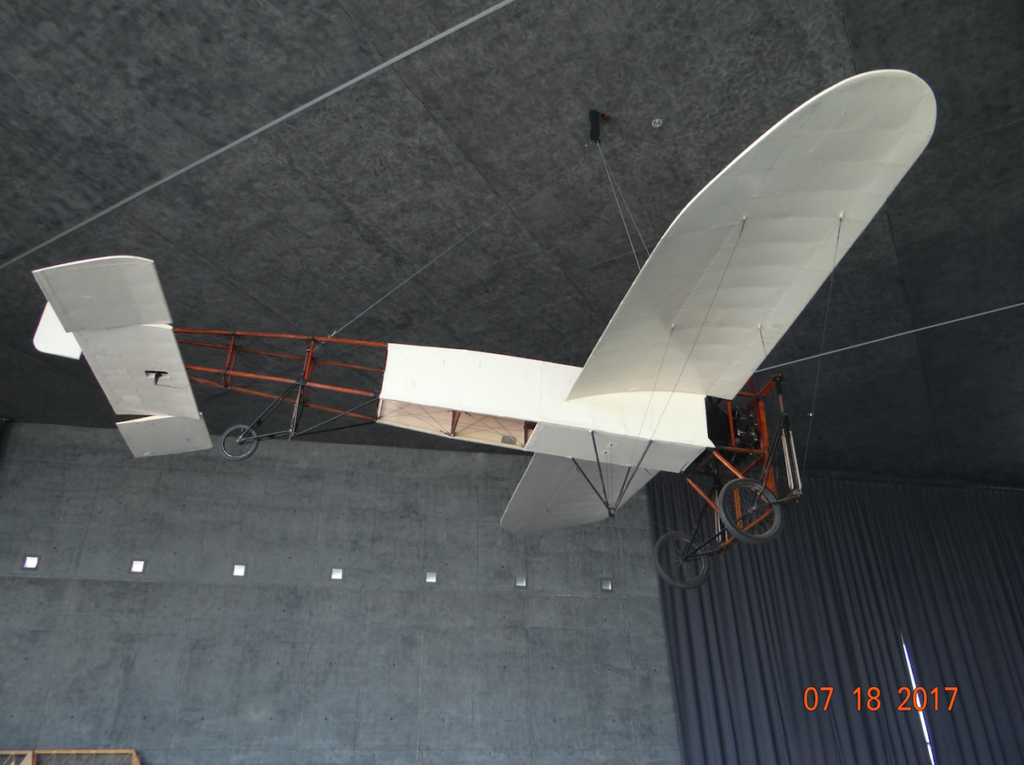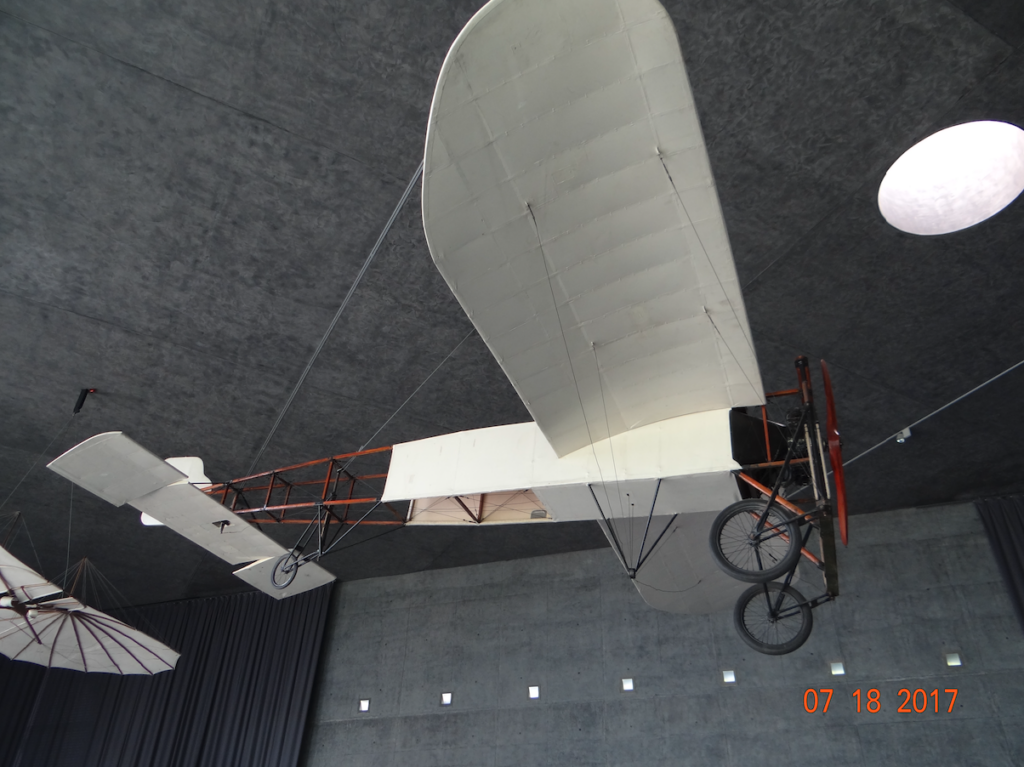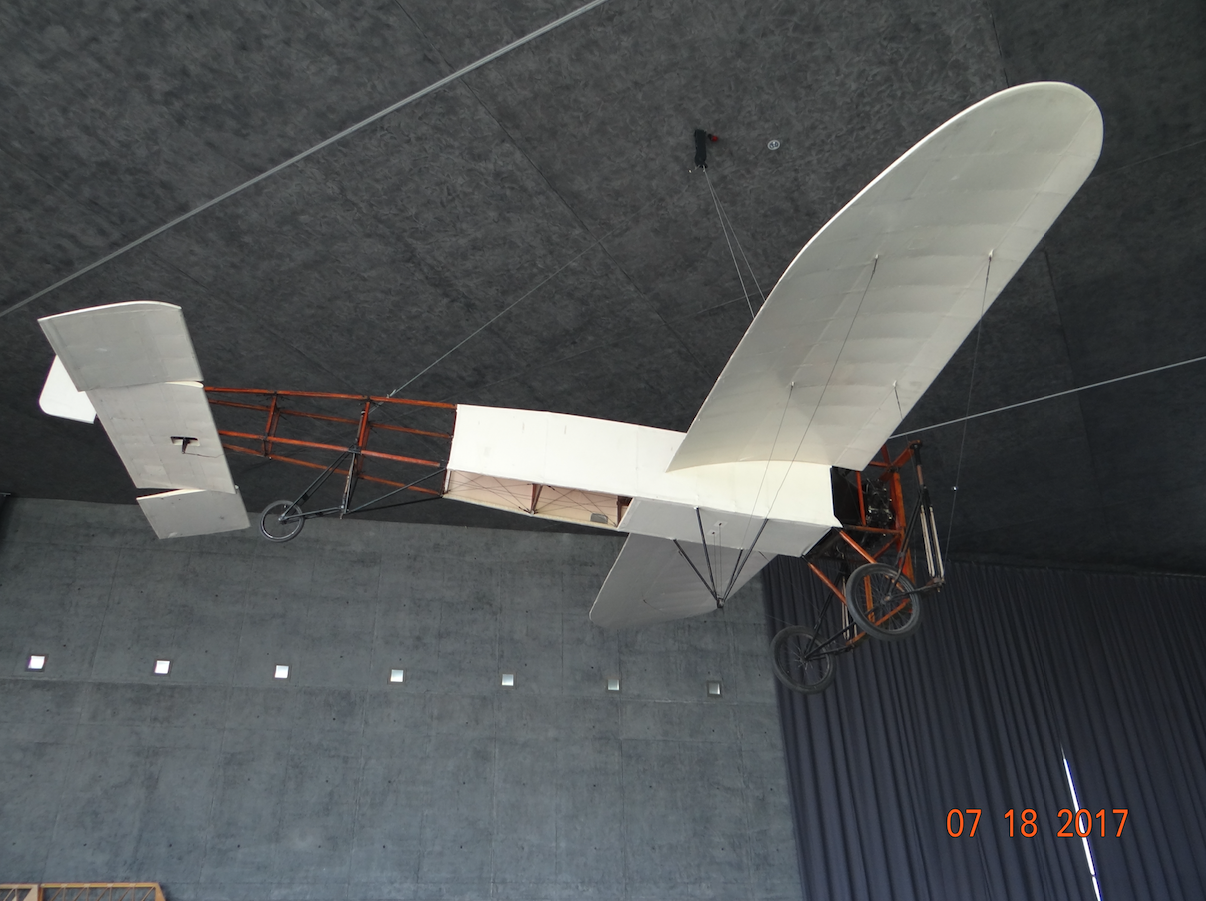Kraków 2025-02-08
Blériot XI


The Blériot XI is one of the first aircraft built in France by designers Louis Blériot and Raymond Saulnier. The aircraft was built in a classic layout; single-engine, monoplane, made of wood, the wings were covered with fabric. The crew consists of one pilot. The aircraft is powered by an Anzani internal combustion engine, 3-cylinder, piston, with a power of 25 HP. Other internal combustion engines were also used.
The first flight of the Blériot XI was made on January 23, 1909, i.e. before the Great World War. The aircraft was mass-produced and was used by the military aviation of the following countries: Argentina, Australia, Belgium, Bulgaria, Chile, Denmark, France, Greece, Guatemala, Japan, New Zealand, Romania, Serbia, Switzerland, Sweden, Turkey, Great Britain, Italy.
Aircraft construction; The aircraft was built of oak and poplar wood. There were no ailerons, only the ends of the wings could be flexibly deflected by cables connected to the control stick. The tail consisted of an elevator and a rudder without a vertical stabilizer. The fixed wheeled landing gear was mounted on flexible legs, which allowed landing in random uneven terrain. The rear of the fuselage was not covered with fabric, which had a positive effect on side wind gusts.
Initially, the drive was an engine from the French aviation pioneer Robert Esnault-Pelterie, which powered a four-blade metal propeller. This engine and propeller were abandoned and a very light and simple 3-cylinder Anzani engine with a power of 25 HP was installed. The engine could then operate continuously for over 1 hour.
The aircraft was created at a time when many designers were already building their own flying aircraft. However, the Blériot XI aircraft’s great popularity was contributed to by its successful flight over the English Channel on 25 July 1909. For the first such flight, the English newspaper Daily Mail funded a prize of 1,000 pounds sterling. The Blériot XI aircraft took off at 04:35, i.e. at sunrise, from the town of Les Barraques near Calais. Initially, the flight was successful. However, over time the engine was very hot and threatened to seize. Fortunately, a light rain began to fall, which cooled the engine. At 05:12, after 37 minutes of flight, the aircraft landed on the other side of the Channel, in Dover. The distance covered was 22 statute miles, or about 35 km. The pilot had a compass at his disposal, because on that day the weather was foggy and there was a fear of losing the route. During landing, the plane was damaged. It is worth mentioning that Louis Blériot’s competitor was another aviation pioneer, Hubert Latham, who had the Antoinette plane, but for various reasons it did not show up for the start. After Louis Blériot’s success, by September 1909, the engineer received orders for 101 aircraft. They were equipped with different engines. Three copies were built in Warsaw at the Aviata plant.
The Polish Aviation Museum in Kraków houses a replica of the Blériot XI plane, which was built in 1967 by Pavel Zolotov.
T-T Blériot XI data: Span 7.79 m. Length 7.62 m. Height 2.69 m. Load-bearing area 14 m2. Empty weight 230 kg. Maximum speed 76 km/h.
Written by Karol Placha Hetman

